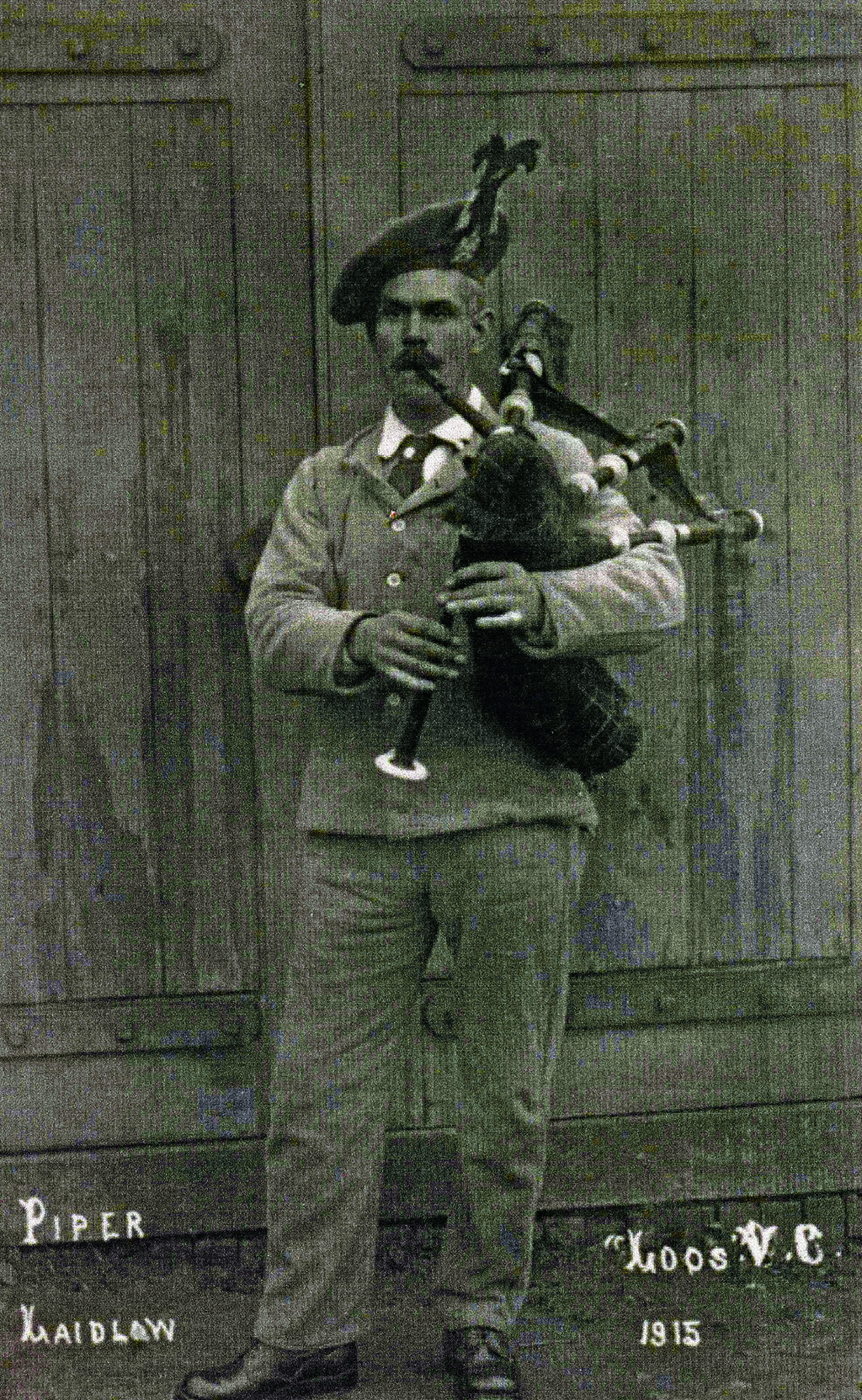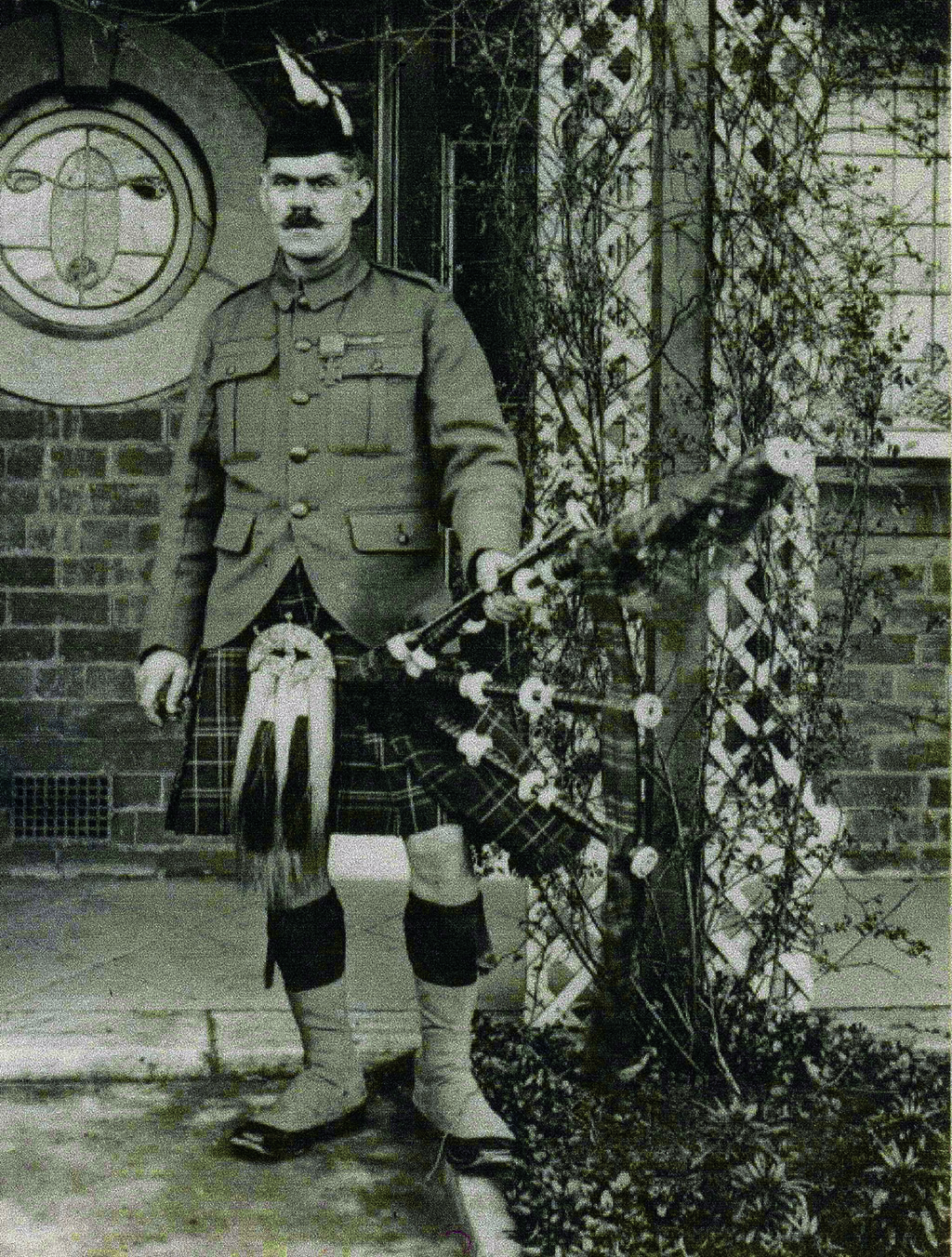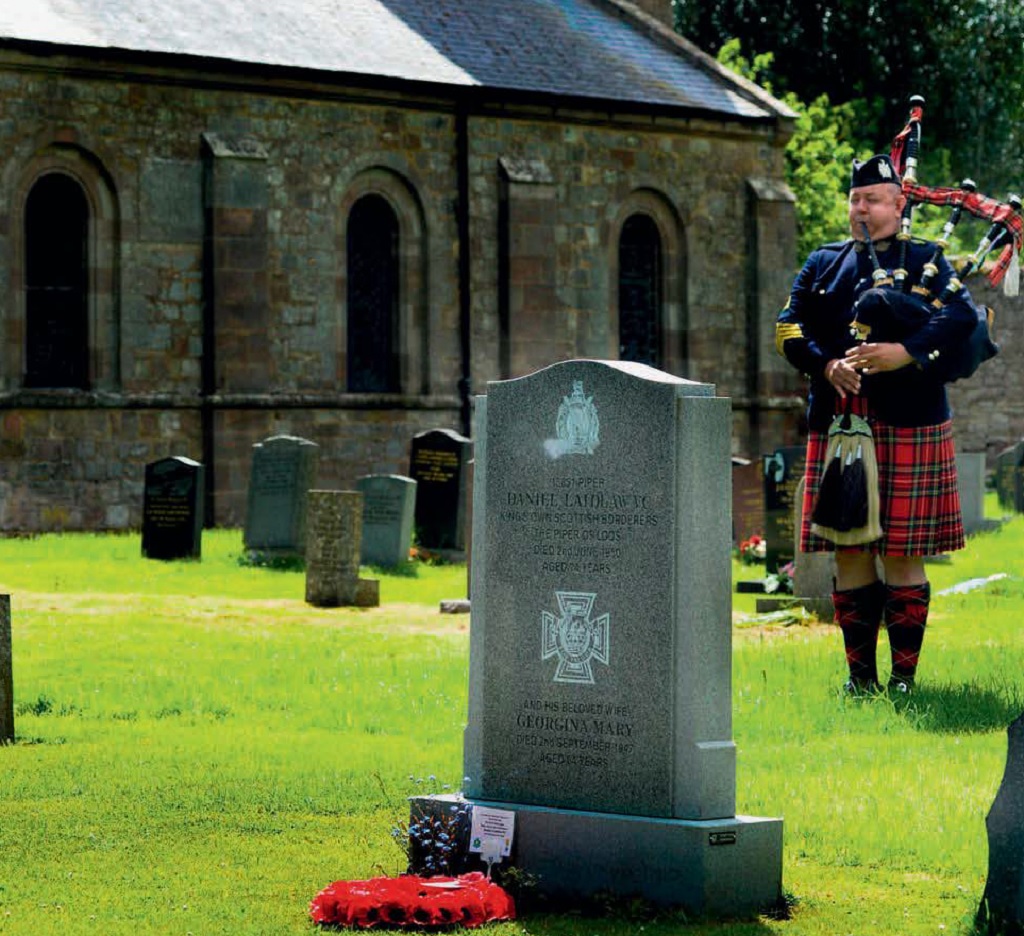King’s Own Scottish Borderers piper Daniel Laidlaw made history when he inspired his comrades into a successful assault on German lines, bravery that earned him the VC.
In the annals of Scotland’s military history it is not hard to find our moments of glory. From Bannockburn to Quebec, from the Black Watch at Ticonderoga and the Scots Greys at Waterloo to the thin red line of the Sutherland Highlanders at Balaclava, Scottish soldiers have proved their mettle.
It is rarely though, even in these episodes, that the tide of battle has turned on the actions of just one man.
But such a thing did happen a hundred years ago this month when the actions of a single Scottish soldier turned the prospect of defeat into something that we might call victory. That man was Daniel Laidlaw, a piper in the 7th Battalion King’s Own Scottish Borderers and the engagement in which he came to fame was to become known as the battle of Loos.
The 7th and 8th battalions of the King’s Own Scottish Borderers (KOSB) had come into being in September 1914 and, from the first, were indivisible. Both battalions were up to strength in late 1914, around 900 at all ranks, and by 17 July 1915 both were in billets south west of Boulogne.

Laidlaw in ‘Hospital Blues’, 1916.
Two months passed during which these two battalions of Kitchener’s ‘New Army’ were exposed to the realities of trench warfare on the Western Front.
And then, in late September, they received orders to prepare for a new offensive. What became known as ‘the big push’ was an attempt by the allied forces of France and Britain to break through the German defences in Artois and Champagne and change the stalemate of the trenches to a war of movement.
It was also to be the biggest British offensive of 1915 and the first time the British would use the new and terrible weapon of poison gas.
The 7th and 8th KOSB were part of 46 Brigade, which sat astride the Loos to Vermelles road and was tasked with sweeping around the top of Loos village towards the La Bassée Road and the position known as Hill 70. Two companies from the 12th Battalion, Highland Light Infantry would enter the German front line and attack with grenades.
Meanwhile, on their right, 7th KOSB would deal with the Loos Road Redoubt, while the right flank of the Brigade advance would be found by the 10th Battalion The Cameronians (Scottish Rifles) Saturday 25 September 1915 brought mist to the little village of Loos, although rain had been falling throughout the night and the duckboards were slippery underfoot as the men assembled for the attack.
The nervousness and apprehension must have been palpable. The final bombardment of the allied artillery barrage, which fell at 5.50am, was followed by 40 minutes during which gas was released and at 6.30am the British went over the top.
But all had not gone according to plan. Due to the lack of wind the gas had formed a 50-foot wall, moving forward slowly in places or virtually standing still and hardly reaching the enemy positions.
The 7th KOSB were in the front line with the 8th battalion in support, and from the start it was heavy going. In gas masks and helmets, the Jocks made their way through the mud, squeezing through the gaps cut in their own wire, trying to spread out over a 400 yard front. A and B companies led the way, with C behind A and D following B at the prescribed 50-yard intervals. They had 200 yards to cover before the German front line.
Soon problems began to occur. The Cameronians on the right of the Brigade made their way forward and despite losing many of their officers made it through the German line and down the slope behind towards the Hulluch road. But 7th KOSB had a more difficult start to the attack.

Laidlaw wearing the VC medal
The worst of it was that the stationary gas, which should have affected the Germans, also hit the Borderers. Gas masks were rudimentary affairs and in such a situation the choice was simple: you could be half choked in your mask, gasping for air, or be utterly choked by gas by removing the mask in an attempt to get more air.
After the initial advance, the 7th’s attack stalled in the German front line fire trench and the battalion might have remained there had it not been for one thing.
With the men wavering, 2nd Lieutenant Martin Young cried out to his piper, Daniel Laidlaw, to play them forward. Climbing onto the parapet of the trench, Laidlaw, oblivious to the danger, took off his own gas mask and suddenly, amidst the din of battle, a sound came to the ears of the beleaguered Borderers that instantly stirred them into action.
It was the unmistakeable sound of the bagpipes, played by Laidlaw who, with no care for his own safety from either gas or bullets, was walking along the parapet of the trench playing the regimental march, Blue Bonnets over the Border. The men rose up and followed him and Lieutenant Young over the top and towards the next line of German defences, which they took.
Within minutes, shrapnel from a German shell wounded Laidlaw but he kept going until a second shell brought him down wounded and also mortally wounding Young. The 7th KOSB though carried on and attacking the enemy redoubt, took out the lethal machine gun nests with grenades and made it to the Hulluch road.
In a later interview for television, Laidlaw described his own experience of the action: ‘On Saturday morning we got orders to raid the German trenches. At 6.30 the bugles sounded the advance and I got over the parapet with Lieutenant Young. I at once got the pipes going and the laddies gave a cheer as they started off for the enemy’s lines. As soon as they showed themselves over the trench top they began to fall fast, but they never wavered but dashed straight on as I played the old air they all knew – Blue Bonnets over the Border. I ran forward with them, piping for all I knew, and just as we were getting near the German lines I was wounded by shrapnel in the left ankle and leg. I was too excited to feel the pain just then, but scrambled along as best I could. I changed my tune to The Standard on the Braes o’Mar, a grand tune for charging on. I kept on piping and piping and hobbling after the laddies until I could go no farther, and then seeing that the boys had won the position, I began to get back as best I could to our own trenches.’

Laidlaw’s grave in Norham churchyard (taken at the annual service commemorating the anniversary of his death).
For this, Laidlaw would later receive the Victoria Cross, the fi rst VC won by the KOSB in the Great War and the fi rst awarded to any soldier of the ‘New Army’. Of course, brave as it was, Laidlaw’s action had only a limited effect. After another 1,000 yards things began to go awry for 7th KOSB. Forced down the bloody slopes of Hill 70 they were compelled to dig in until relieved on 27 September.
Losses to both battalions of the regiment that day were dreadful. The 7th lost 611 other ranks out of 950, and the 8th lost 379 from its original 950. Twenty offi cers of the 7th and 14 from the 8th also fell. But the new battalions of the KOSB had proved themselves and that was largely thanks to the bravery of Piper Laidlaw.
Daniel Laidlaw was born at Little Swinton, Berwickshire in 1875 and joined the army in 1896, serving first with the Durham Light Infantry in India. In 1898 he transferred as a piper to the KOSB and, in 1914, he re-enlisted in the regiment. Surprisingly, at the time of the battle Laidlaw was 40 years old.
Laidlaw survived the war and afterwards reached the rank of Sergeant-Piper. He died in 1950, aged 74, and is buried at Norham Churchyard, Northumberland. His medals are currently on display at the National Museum of Scotland in Edinburgh.
On 25 September, there will be a small group at Loos from Berwick with Kevin Laidlaw, who will play the same pipes as his great grandfather on the centenary of the battle starting.
Iain Gale is the writer of the official regimental history of the KOSB, Always a Borderer.
TAGS

